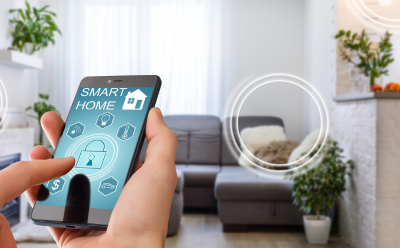The challenges presented by COVID-19 are far-reaching, as it seems every aspect of life has been changed in one way or another. Due to mandated stay-at-home and shelter-in-place orders, many households are now operating with many more occupants under one roof. And with more of our lives being lived digitally, whether it’s through working from home, gaming and streaming movies and television shows, the demand for a strong, reliable internet connection at home is higher than it was before the pandemic. As such, if this is a new situation for you and your family, you may be experiencing an entirely new set of challenges related to your WiFi connection.
If you’re experiencing dropped WiFi connections, unbearable lagging and slow internet speeds on a regular basis throughout the day, you may have too many devices sharing the internet connection at once. This is not only frustrating to deal with while you’re stuck at home, but it can also be debilitating when it comes to work productivity.
Slow Internet Connection Causes
At home, the more internet-enabled devices, including smartphones, laptops and tablets, the more your connection will begin to degrade if they’re all accessing the internet at once. Typically, an overloaded wireless network connection is slow, with downloads from the internet taking much longer than usual. Here are some of the reasons this may be happening.
You Need a New Wireless WiFi Router
Wireless WiFi routers are the hardware that internet service providers use to connect you to cable or internet networks. A new, modern router that is WiFi 6 certified delivers an upgraded, faster standard of WiFi that allows more devices to be enabled at once. Just like our mobile internet has upgraded from 3G to 4G and eventually 5G, WiFi technology is also evolving to be more efficient. The type of router you have should be prominently displayed on the router itself, which is usually located near a wall jack. The router’s product number will be listed in a combination of letters and numbers. If you’re in the market for a new router, we recommend opting for a WiFi 6 certified router, as this is the new standard that’s packed with faster speeds for your entire household’s wireless devices.
You Need to Change the Placement of Your Wireless WiFi Router
If you’re experiencing “dead zones” or places in your home that frequently cause your calls to drop, you may need to change the location of the router. If possible, it should be in a central location to all of the internet-enabled devices in your household. In addition, try to keep the router in an elevated position and avoid placing it on the floor so it can efficiently pass signals throughout your home.
Your WiFi Channel Needs to Change
Similar to radio channels, your WiFi connection also works off a channel. Typically, a wireless router automatically selects the WiFi channel for your network during the installation. Based on the environment of your wireless environment, this can cause slow WiFi speeds and a poor connection. In addition, if your neighbors are using the same WiFi channel, it can also cause interference. Selecting the right WiFi channel may drastically improve your wireless internet experience.
You Need a Wireless Network Upgrade
The number one factor that impacts your WiFi signal is the hardware equipment installed. If you can’t remember the last time you upgraded your home wireless network, now is the time, as you may be missing out on faster internet speeds and reliability. Most homeowners don’t think of upgrading or replacing their current home network system until it stops performing as expected. We recommend hardwiring as many devices as possible. Hardwiring each access point on “fixed” devices relieves the WiFi network, which then can be used for only mobile devices. A home wireless network upgrade, including upgrading the hardware, hardwiring devices and securing their proper placement, will ensure the technology in your home is able to handle your household’s needs.
To evaluate your home’s specific needs, you will need to have a consultation with a WiFi network professional in your area.
Ready to Consider a Home WiFi Network Upgrade?
While home during COVID-19, having a reliable internet connection is more important than ever. Lifetronic Systems guarantees 100% fast, next-generation wireless networking both inside and out of your home. And we will never leave your home until you are 100% satisfied. If you’re ready to learn more about a wireless network upgrade for your home, contact us here.




